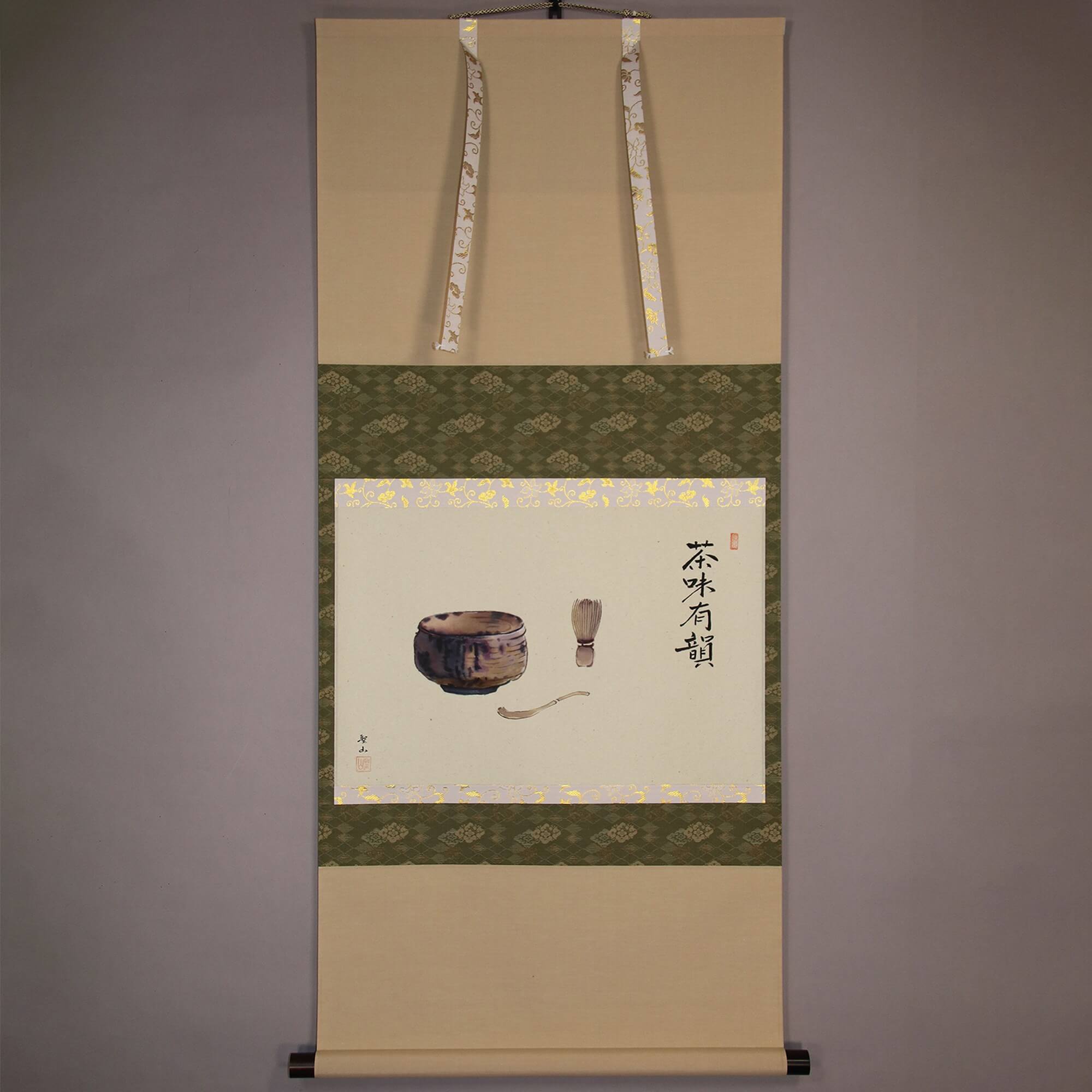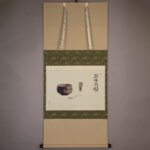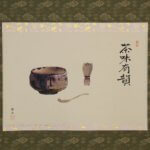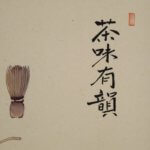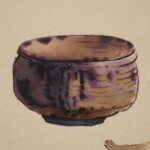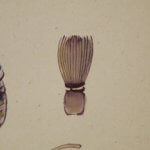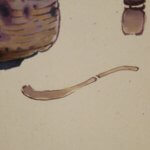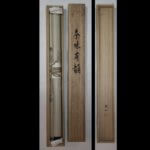Kakejiku Hanging Scroll: Tea Flavor Has Its Rhythm / Kuzuya Seizan - Chami Yūin
- Product ID
- B0077
- Name
- Kuzuya Seizan
- Profile
A Japanese-style painter. In 1930, born in Gifu Pref. Pupil of Tsubouchi Setsutarō and Kojima Shikō. Member of the Tōyō Bijutsu-kai. Specialized in flowers & birds paintings, Noh-ga paintings, and Yamato-e paintings.
- Size
- 600mm x 1220mm
- Roller End Material
Redsandakwood- Material of the Work
- Japanese paper
- Price
- JPY 45,000
- Stock Condition
- In stock
- Payment: Click the Paypal Mark
- Duty and Taxes
Import duty and taxes are beyond our control and may apply to your shipment. Please noted that these fees are the responsibility of the buyer.
- Description
The tea ceremony is one of the representative arts of Japan, and it is a comprehensive art consisted of all factors that compose a tea ceremony such as necessary teaware, tea master’s hospitality to his guests, facilities, preparations for the ceremony, and mental exchange between the tea master and guests during the ceremony. For the Japanese, the tea ceremony is a culture to be proud of.
In this piece, a Japanese painter, Kuzuya Seizan, with his interesting brushstroke, drew three necessary teawares for the tea ceremony; a tea bowl, a tea brush, and a tea ladle. There are only three teawares painted on the canvas. Although that, instead of providing loneliness, helps people appreciate the work meticulously focusing their attention to these objects. This works helps people naturally regain the calmness of mind that is so important in the tea ceremony. The calligraphy attached to the painting means, “Tea flavor has its rhythm”. This implies if you calm your mind and concentrate on tasting the tea, you will be able to enjoy infinite variety in the taste of the tea. It is a masterpiece that makes people feel as if they are served and enjoying tea at a tea ceremony.

